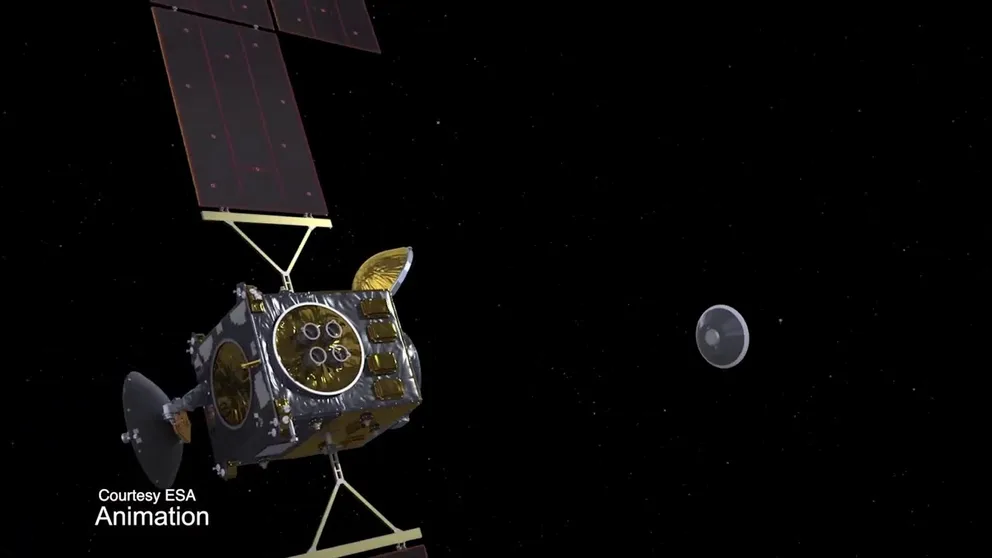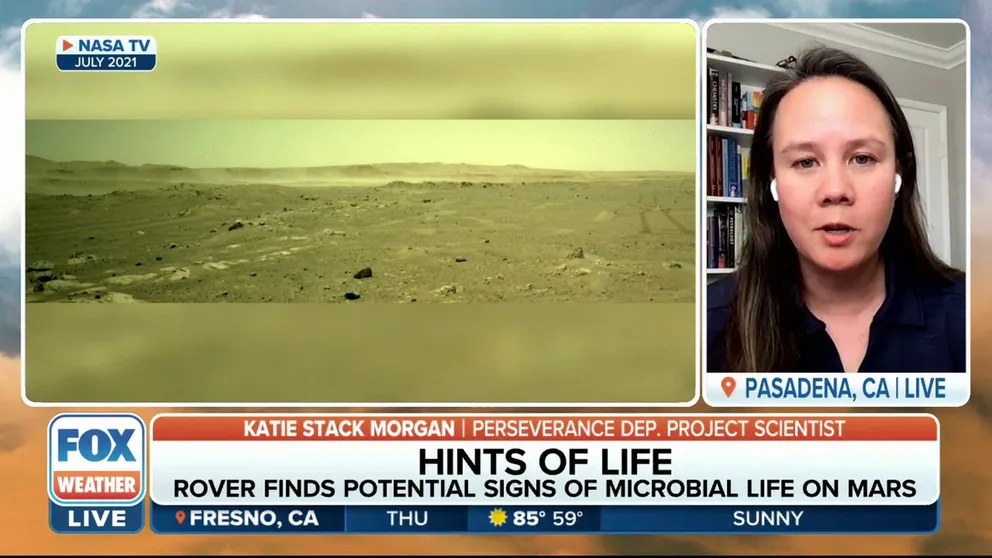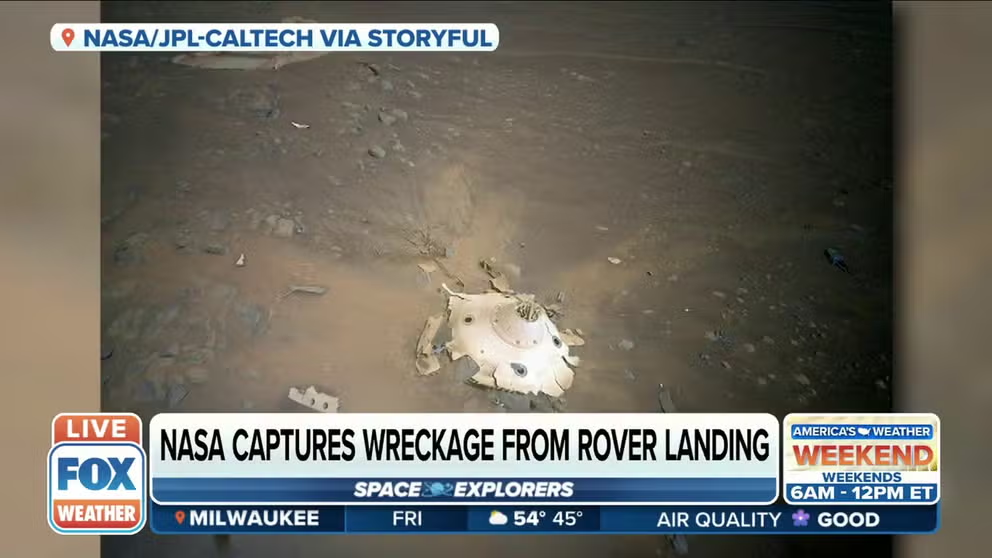'Intriguing' bedrock found on Mars after NASA's Perseverance rover looks for life in Martian crater
The Mars Perseverance rover previously found biologically-interesting rocks in an ancient lake bed that could indicate microbial life existed on the red planet billions of years ago.
How NASA brings Mars samples safely to Earth
This short animation features key moments of NASA and ESA’s Mars Sample Return campaign, from landing on Mars and securing the sample tubes to launching them off the surface and ferrying them back to Earth.
NASA says that its Perseverance rover is investigating an intriguing Martian bedrock after uncovering an unexplored area of the Red Planet.
After collecting similar rock samples in July, the Perseverance rover has begun exploring "Yori Pass" near the base of Jezero Crater's ancient river delta.
Scientists found the bedrock to be sandstone and say that it's incredibly fascinating because it is composed of fine grains that have been carried from elsewhere by water before settling and forming into the stone.
"We often prioritize study of fine-grained sedimentary rocks like this one in our search for organics and potential biosignatures," said Katie Stack Morgan, Perseverance deputy project scientist at NASA's Jet Propulsion Laboratory.
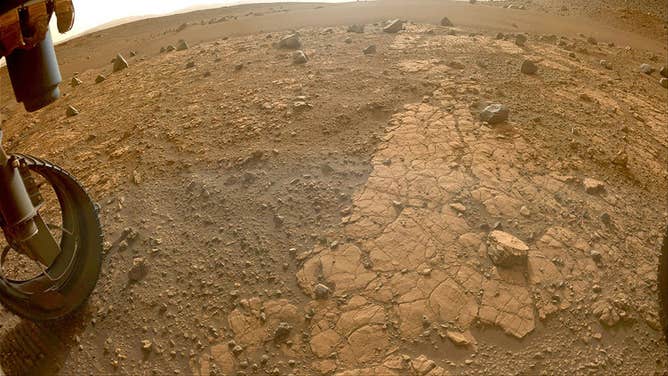
This image of "Yori Pass" was taken by a Hazcam imager aboard NASA’s Perseverance Mars rover on Nov. 5, 2022.
(JPL-Caltech / NASA)
NASA's Perseverance rover continues to search Jezero Crater for any characteristics that serve as evidence for ancient life on Mars.
"What's especially interesting about the Yori Pass outcrop is that it is laterally equivalent with 'Hogwallow Flats,' where we found very fine-grained sedimentary rocks. That means that the rock bed is located at the same elevation as Hogwallow, and has a large, traceable footprint visible on the surface," Morgan said.
In September, the Mars Perseverance rover found biologically-interesting rocks in an ancient lake bed that could indicate microbial life existed on the red planet billions of years ago.
NASA Perseverance Rover discovers 'potential biosignatures' on Mars
Perseverance Deputy Project Scientist Katie Stack Morgan said the rover discoveries point to an environment martian life may have lived in.
Scientists say the discovery was made while Percy was exploring 8 miles of the Jezero Crater. Researchers believe the area was once a lake more than 3.5 billion years ago.
'THE BIG ONE': MONSTER QUAKE ON MARS TO PROVIDE VIEW INTO PLANET LIKE NO OTHER
Perseverance landed on Mars in February 2021, along with a 4-pound helicopter named Ingenuity that has been a wild success showing controlled flights can be made on Mars. The robot has seven science instruments, including cameras and two microphones that record the sounds of wind on Mars and its landing.
What's ahead? A critical robotic handoff
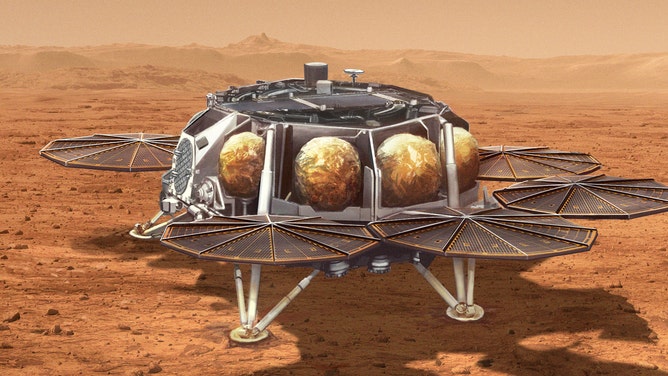
This illustration shows a concept for a proposed NASA Sample Retrieval Lander that would carry a small rocket (about 10 feet, or 3 meters, tall) called the Mars Ascent Vehicle to the Martian surface. After being loaded with sealed tubes containing samples of Martian rocks and soil collected by NASA's Perseverance rover, the rocket would launch into Mars orbit. (Image: NASA)
(NASA)
The rover's biggest job is still to come.
Perseverance continues to take rock core samples and scout potential sample landing sites for a robotic sample-return mission.
To bring the first samples from Mars back to Earth, NASA and the European Space Agency have an elaborate plan involving a fleet of robots, including the Perseverance rover, a new Martian lander, a sample-catching spacecraft and two tiny helicopters.
The two space agencies simplified the original Mars sample return campaign mission, removing a sample fetch rover and its associated lander. NASA and ESA managers said they changed the plan because of the expected longevity of Perseverance, and the Ingenuity helicopter's success, which has now completed 33 flights on Mars.
FATE OF SEISMIC AND WEATHER MONITORING ON MARS DEPENDS ON DUST DEVIL
NASA Science Mission Directorate Associate Administrator Thomas Zurbuchen said the plan was always to have two methods of getting the samples back to Earth, using Perseverance or another rover for the handoff.
Instead of an additional rover, the plan is to use two tiny helicopters as the backup option and Percy as the primary. The rover is the primary means to get the samples to the Sample Retrieval Lander, which will carry the Mars Ascent Vehicle and ESA's robotic transfer arm.
Mars helicopter captures images of debris from Perseverance rover's landing gear
Mars helicopter captures images of debris from Perseverance rover's landing gear.
Percy will also deposit a sample cache in the river delta as an "insurance policy" option before moving on to more ancient terrain on Mars. Future missions could pick up those samples.
The ultimate goal is to get the first Mars soil and rock samples back to Earth for a detailed analysis.
Sharma said bringing the rock cores back to Earth is the surest way to confirm the organic matter the science team believes it has found in the Mars rock samples.
"Obviously, the instruments that we have in the rover are extraordinary, and the fact that we can make these observations of organic molecules on Mars, to begin with, it is just awesome," Sharma said. "But it's really the level of detail spatially that that will be different here on Earth."
'CONTINENT-SIZE' DUST STORM TAKES OUT NASA'S SEISMIC STATION ON MARS
NASA's head of planetary science, Lori Glaze said what the rover has found so far tells the team they picked the right spot on Mars to explore.
"Just the complete body of work that's been completed by this incredible Perseverance team to date tells me that we not only went to the right place, but we sent the right spacecraft with the right science instruments to explore this amazing ancient environment on Mars," Glaze said.
Over the next few months, Perseverance will explore an area known as the Enchanted Lake to collect more samples.
